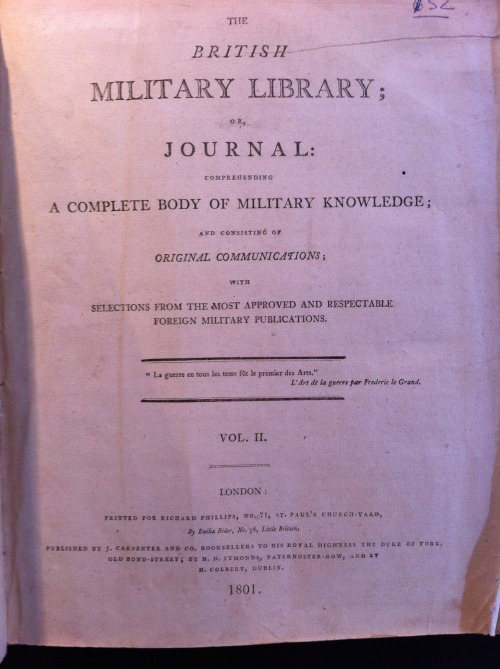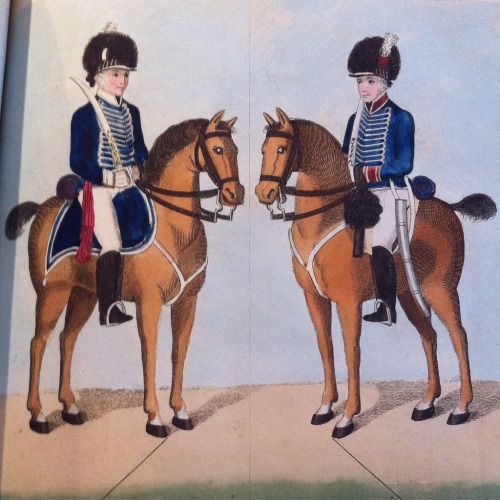#book plates
‘The British Military Library or Journal: comprehending a complete body of military knowledge; and consisting of original communications; with selections from the most approved and respectable foreign military publications’. 1798 – 1801.
This two volume set consists of the issues of The British Military Library produced from 1798 – 1801 and subsequently bound together.
The British Military Library is a fantastic resource bringing together studies on particular military figures, case studies of battles complete with compositions on pull out sheets and articles on various topics relevant to a British army officer of the time.
i – The title page.
ii – Left an officer of the 7th (or Queen’s Own) Regiment of Light Dragoons. Right an officer of the 16th (or Queen’s Own) Regiment of Light Dragoons.
iii – Lieutenant General Sir Ralph Abercromby K.B. Here dressed as Colonel of the 2nd (or Royal North British) Dragoons.
iv – A list of the rates of pay for the various ranks of cavalry in the British Army.
As seen at the Lyon & Turnbull rare books and manuscripts auction viewing back in early May, 2016.
Post link
This book plate of Dr. A. Frank was designed by Richard Scholz. Richard Scholz was a German illustrator best known for children’s books including Hansel and Gretel. He lived from 1860 to 1939.
Dr. A. Frank is Dr. Adolph Frank (1834-1916), a German-Jew chemist, engineer, and businessman. He is best known for having discovered uses of potash ( a mixture of potassium hydroxide and potassium carbonate left over in ashes) and creating the industry. He took up an apprenticeship as an apothecary in Osterburg while in school. From 1855-1857 he studied pharmacy, natural sciences and technology at university in Berlin. In 1862 he received his doctorate in chemistry from the university in Gottingen.
His work in the fertilizer field led to the use of the fertilizer discovered by Sidney Gilchrist Thomas. Along with Nikodem Caro, he developed the Frank-Caro process of extracting calcium cyanamide in 1899, which was the foundation of the nitrogen and calcium cyanamide fertilizer industry.
The brown coloring of bottles, which is to protect the content of the bottle from the effects of light, can also be attributed to him. He was awarded the John Scott Medal by our Philadelphia neighbors, the Franklin Institute, in 1893.
The book that the plate is in is Taschenbuch der Flora Deutschlands; nach dem Linnéischen Systeme geordnet, 1847. It is about the flora of Germany arranged according to the Linnaeus system.
Post link





